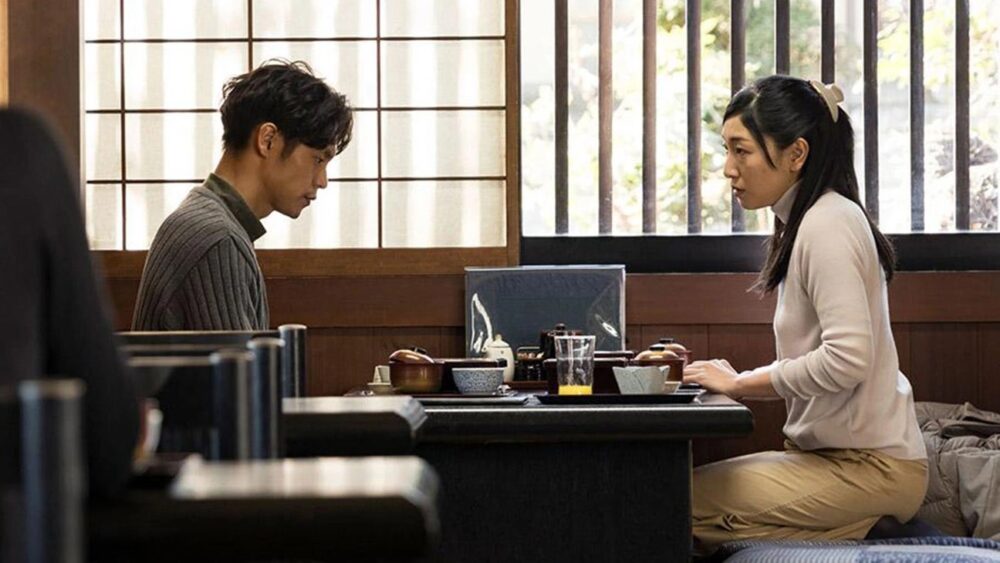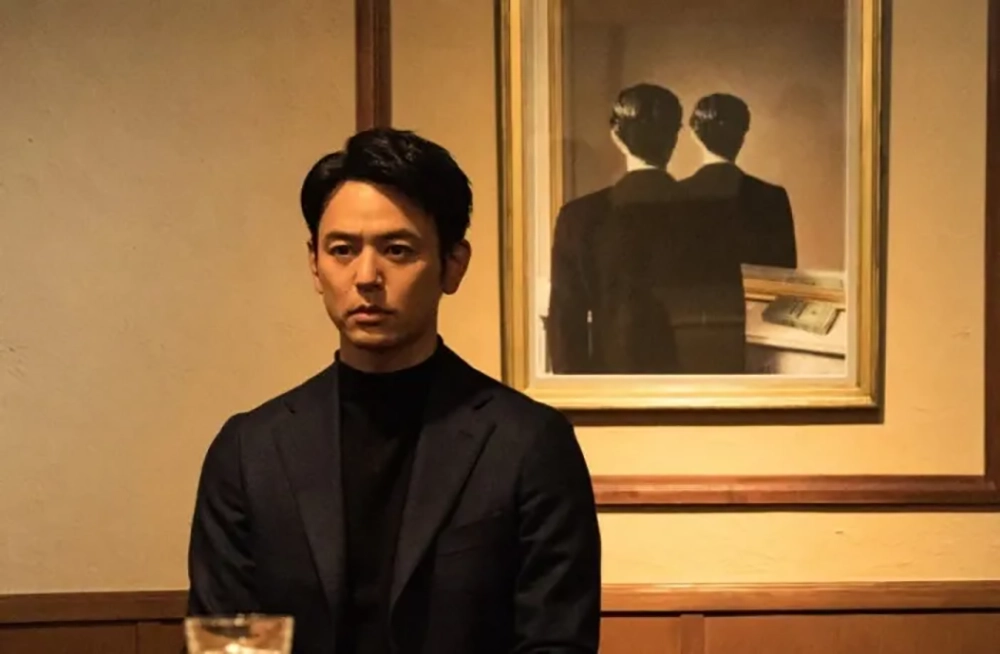One of the theatrical posters for the Kei Ishikawa’s new film “A Man” (Japanese: ある男, “Aru otoko”) features a man turning his back from the painting by Belgian surrealist René Magritte. That painting, “Not to Be Reproduced,” provides a deeper subtext to the film’s overall themes of perception, identity, and ultimately, obsession.
As the film that brings director Kei Ishikawa back to the festival circuits following his acclaimed movie ‘Traces of Sin’, ‘A Man’ follows Rie (Sakura Andō), a divorcée who just moved back to her hometown. With her recent divorce along with another tragedy within her family, she has decided to guard her heart. So when Rie meets a charming man named Daisuke (Masataka Kubota) who woos her with art and an unassuming persona, she eventually decides to give romance another go.
Bliss in films, however, usually exists on borrowed time, and ‘A Man’ is no different. Daisuke dies in an accident, cutting Rie’s second chance at happiness short. As the family holds a memorial service for Daisuke, a man appears one day, announcing himself as the deceased’s estranged brother. However, when he takes a look at a photo of Daisuke, he drops the bomb.
“This is not Daisuke.”
When the smoke clears and Rie realizes that her beloved husband of three years and nine months was in fact a totally different man, one question looms large.
Why did he do it?

A Man Who Claimed Who He Wasn’t
Based on the novel ‘Aru Otoko’ by Keiichiro Hirano, ‘A Man’ actually tells the story of two people: that of Rie and attorney Akira Kido (Satoshi Tsumabuki). Rie approaches Kido, her former attorney, and asks him for a strange favor: she wants Kido to investigate Daisuke’s past. His job is to perform a background check on who Daisuke really was—and why he did what he did.
As Kido proceeds with his investigation, Rie is left grappling with the aftermath of their discovery. Can her love conquer deception? When the truth finally comes to light, what will become of that love?
For his part, Kido encounters a number of characters in his efforts to uncover “Daisuke’s” past, who lived his life as a different person. But the deeper he goes down the rabbit hole, Kido develops a strange understanding about a man’s concerted decision to assume another man’s identity. These mixed feelings become evident as he ruminates over his own place in the world.
Ishikawa’s Meditative Direction Makes Up for the Film’s Deliberate, Languid Pace
Ishikawa makes an unconventional decision to switch the story’s focus from the widow to the investigator. This allows for a more interesting examination of one’s conscious, clinical efforts to hide his past and how they affect the two central characters. Ultimately, ‘A Man’ sees one who’s trying to let love conquer the deception; and the other who’s developed a somewhat-understandable fascination with his case.
Finally, whereas the film’s slow-burning might prove challenging to those accustomed to a standard thriller featuring sleuthing and detective work; Ishikawa’s direction doesn’t make it any better. On the contrary, ‘A Man’ opts to take the meditative path.
This brings me back to that Magritte painting. “Not to Be Reproduced” highlighted the intrinsic nature of human beings to peer through the surface in search of details that they can’t see. Consequently, this pursuit of the unknown informs the viewers’ perception of what’s real to them—or, at the most basic level, what makes sense.
And for what it’s worth, for Ishikawa’s characters, that second part is all that matters.
 ‘A Man’ premiered at the Horizons section of the 79th edition of the Venice Film Festival. It currently does the rounds at this year’s Santa Barbara International Film Festival.
‘A Man’ premiered at the Horizons section of the 79th edition of the Venice Film Festival. It currently does the rounds at this year’s Santa Barbara International Film Festival.


